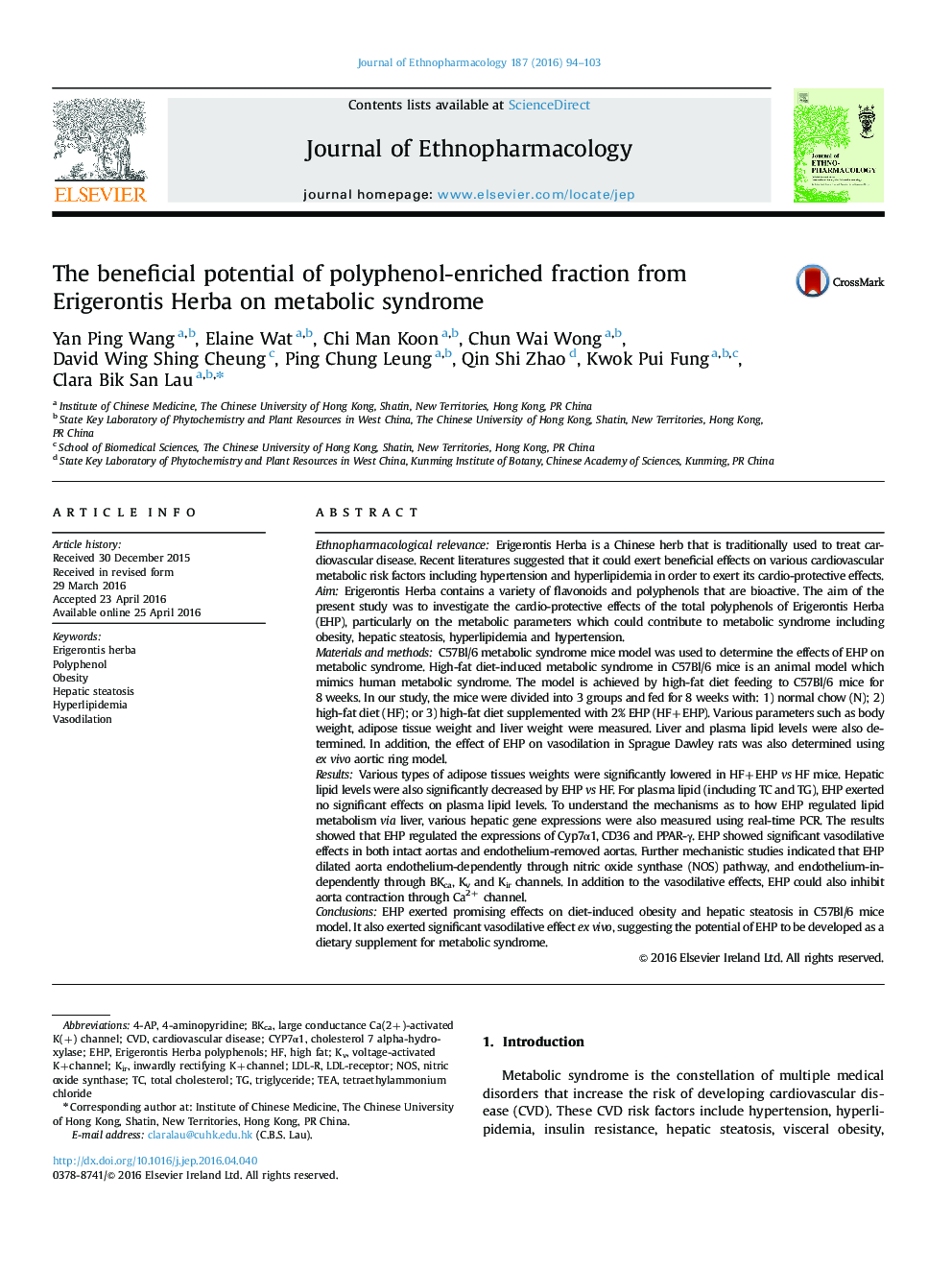| Article ID | Journal | Published Year | Pages | File Type |
|---|---|---|---|---|
| 2544666 | Journal of Ethnopharmacology | 2016 | 10 Pages |
Ethnopharmacological relevanceErigerontis Herba is a Chinese herb that is traditionally used to treat cardiovascular disease. Recent literatures suggested that it could exert beneficial effects on various cardiovascular metabolic risk factors including hypertension and hyperlipidemia in order to exert its cardio-protective effects.AimErigerontis Herba contains a variety of flavonoids and polyphenols that are bioactive. The aim of the present study was to investigate the cardio-protective effects of the total polyphenols of Erigerontis Herba (EHP), particularly on the metabolic parameters which could contribute to metabolic syndrome including obesity, hepatic steatosis, hyperlipidemia and hypertension.Materials and methodsC57Bl/6 metabolic syndrome mice model was used to determine the effects of EHP on metabolic syndrome. High-fat diet-induced metabolic syndrome in C57Bl/6 mice is an animal model which mimics human metabolic syndrome. The model is achieved by high-fat diet feeding to C57Bl/6 mice for 8 weeks. In our study, the mice were divided into 3 groups and fed for 8 weeks with: 1) normal chow (N); 2) high-fat diet (HF); or 3) high-fat diet supplemented with 2% EHP (HF+EHP). Various parameters such as body weight, adipose tissue weight and liver weight were measured. Liver and plasma lipid levels were also determined. In addition, the effect of EHP on vasodilation in Sprague Dawley rats was also determined using ex vivo aortic ring model.ResultsVarious types of adipose tissues weights were significantly lowered in HF+EHP vs HF mice. Hepatic lipid levels were also significantly decreased by EHP vs HF. For plasma lipid (including TC and TG), EHP exerted no significant effects on plasma lipid levels. To understand the mechanisms as to how EHP regulated lipid metabolism via liver, various hepatic gene expressions were also measured using real-time PCR. The results showed that EHP regulated the expressions of Cyp7α1, CD36 and PPAR-γ. EHP showed significant vasodilative effects in both intact aortas and endothelium-removed aortas. Further mechanistic studies indicated that EHP dilated aorta endothelium-dependently through nitric oxide synthase (NOS) pathway, and endothelium-independently through BKca, Kv and Kir channels. In addition to the vasodilative effects, EHP could also inhibit aorta contraction through Ca2+ channel.ConclusionsEHP exerted promising effects on diet-induced obesity and hepatic steatosis in C57Bl/6 mice model. It also exerted significant vasodilative effect ex vivo, suggesting the potential of EHP to be developed as a dietary supplement for metabolic syndrome.
Graphical abstractFigure optionsDownload full-size imageDownload high-quality image (121 K)Download as PowerPoint slide
